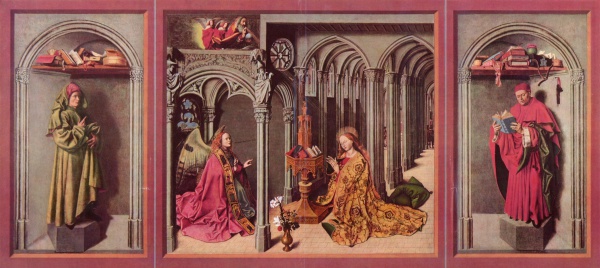Facts About Aix Annunciation
The "Aix Annunciation" is an exquisite painting from 1443-1445, attributed to either Barthélemy d'Eyck or the Master of the Annunciation of Aix-en-Provence. Originally housed in the Cathédrale Saint-Sauveur in Aix-en-Provence, France, the painting is currently divided among several locations, including the Église de la Madeleine and the Museum Boijmans Van Beuningen in Rotterdam.
This artwork masterfully depicts the Annunciation within a Gothic church milieu. The central panel portrays a divine scene featuring the angel Gabriel, the Madonna, and God. Commissioned by Pierre Corpici, the painting integrates influences from Early Netherlandish artists like Jan van Eyck. The intricate iconographic details echo Annunciations created by van Eyck and his contemporaries.
When the triptych is closed, the side panels unveil a "Noli me tangere" scene with Mary Magdalene and Christ. The figures are rendered in elaborate, detailed clothing characteristic of the Burgundian school, giving them a larger-than-life presence.
The "Aix Annunciation" is one of the rare surviving panel paintings associated with Barthélemy d'Eyck, who later gained renown for his illuminated manuscripts commissioned by René of Anjou. This painting is historically and artistically significant, showcasing a rich fusion of influences and meticulous craftsmanship that epitomizes the artistry of its era.

 Germany
Germany